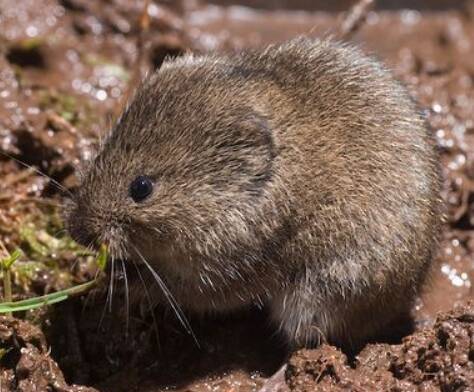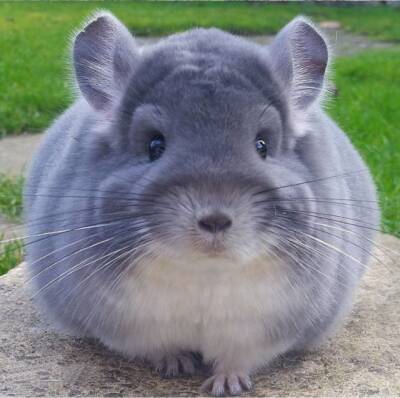
Microtus oeconomus
Microtus oeconomus,Root Vole
Root voles are very tolerant of moisture, and their population is large in v···

Alexandromys limnophilus
Alexandromys limnophilus,Microtus,Root Vole subspecies qaidam,Microtus oeconomus limnophilus
Qaidam root voles live in caves, which are relatively simple and mostly have···

Lasiopodomys (Stenocranius) gregalis
Lasiopodomys (Stenocranius) gregalis,Lasiopodomys gregalis,Social Vole
Narrow-headed voles live in groups. They are active mainly during the day, b···

Microtus fortis
Microtus fortis,Reed Vole,Swamp vole, Far Eastern vole, Giant vole
The oriental vole is a typical burrowing type. It does not hibernate and mov···

Garrulax formosus
Garrulax formosus,Red-winged Laughingthrush
Common voles belong to the subfamily Arvicolinae. There is no dispute about ···

Phaiomys leucurus
Phaiomys leucurus,Pitymys leucurus,Brandt's pine vole, Pine vole, Pine vole、Blyth's vole
The white-tailed pine vole belongs to the subfamily of voles (Arvicolinae). ···

Neodon irene
Neodon irene
Plateau pine voles belong to the subfamily Arvicolinae. The classification s···

Eothenomys miletus
Eothenomys miletus,Eothenomys miletus confinii,Eothenomys miletus miletus,Asiatic velvet mouse
The large woolly rat belongs to the subfamily Arvicolinae. Its classificatio···

Eothenomys eva
Eothenomys eva(Thomas,1911),Taozhou woolly rat
Gansu woolly rat belongs to the subfamily Arvicolinae. Gansu woolly rat and ···

Clethrionomys rutilus
Clethrionomys rutilus,,Myodes rutilus,Northern Red-backed Vole,Clethrionomys rutilus
Red-backed voles belong to the subfamily Microtiinae. The species-level clas···

Clethrionomys rufocanus
Clethrionomys rufocanus,Myodes rufocanus,Gray Red-backed Vole,Clethrionomys rufocanus,Hypudoeus rufocanus,Red-haired mouse
The brown-backed croaker belongs to the subfamily Arvicolinae. The species s···

Alticola stoliczkanus
Alticola stoliczkanus (Blanford,1875)
Alticola strachyi belongs to the Arvicolinae subfamily. The type specimen is···

Alticola argentata
Alticola argentata,Gray Mountain
Belongs to the subfamily Arvicolinae. Its taxonomic status is controversial ···

Eospalax smithi
Eospalax smithi,Myospalax smithii,Myospalax smithii Thomas
The Stevens's zokor belongs to the subfamily Myospalacinae. The Stevens&···

Myospalax fontanieri
Myospalax fontanieri,Common Chinese zokor,Eospalax fontanieri,Blind mouse, ground mouse, mole
The Chinese zokor belongs to the subfamily Myospalacinae. There is much cont···

Rhizomys sumatrensis
Rhizomys sumatrensis,Indomalayan Bamboo Rat,Red-cheeked bamboo rat, Red bamboo rat
The bamboo rat belongs to the subfamily Rhizomyinae, and the species is nati···

Rhizomys sinensis Gray
Rhizomys sinensis Gray, bamboo rat, bamboo pig, bamboo civet, bamboo civet, bamboo weasel, reed rat, reed rat
Like the silver-star bamboo rat, the Chinese bamboo rat is also a member of ···

Rhizomys pruinosus
Rhizomys pruinosus,Rhizomys latouchei, white bamboo rat, rough-haired bamboo rat, bamboo rat, Tulun
Silver-star bamboo rat belongs to the subfamily Rhizomyinae. In terms of cla···

badius
badius,Muscicapus, bamboo rat, winter rat, muscicapus, hog rat, bamboo civet, etc.
The bamboo rat belongs to the subfamily Rhizomyinae. There is only one speci···

Typhlomys macrourus Zheng
Typhlomys macrourus Zheng,1993
The giant pig-tailed rat belongs to the Platacanthomyidae family, a very uni···

Sicista tianschanica
Sicista tianschanica,Sicista concolor,Rat
Tianshan scissorium belongs to the subfamily Sicistinae, with only one genus···
